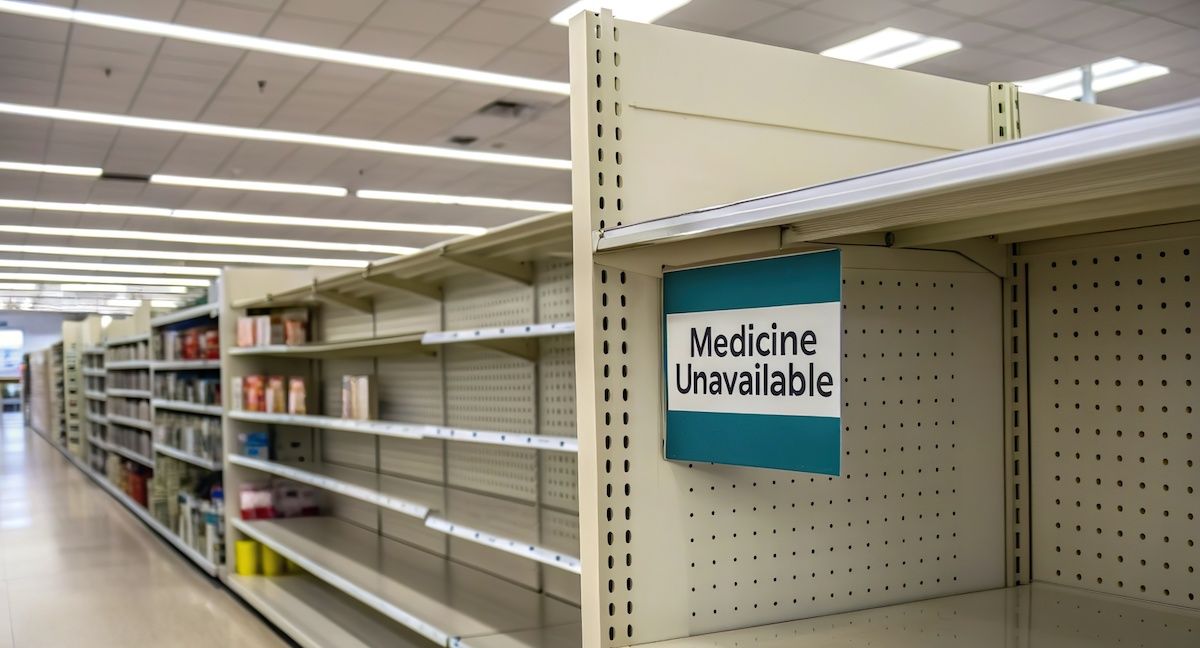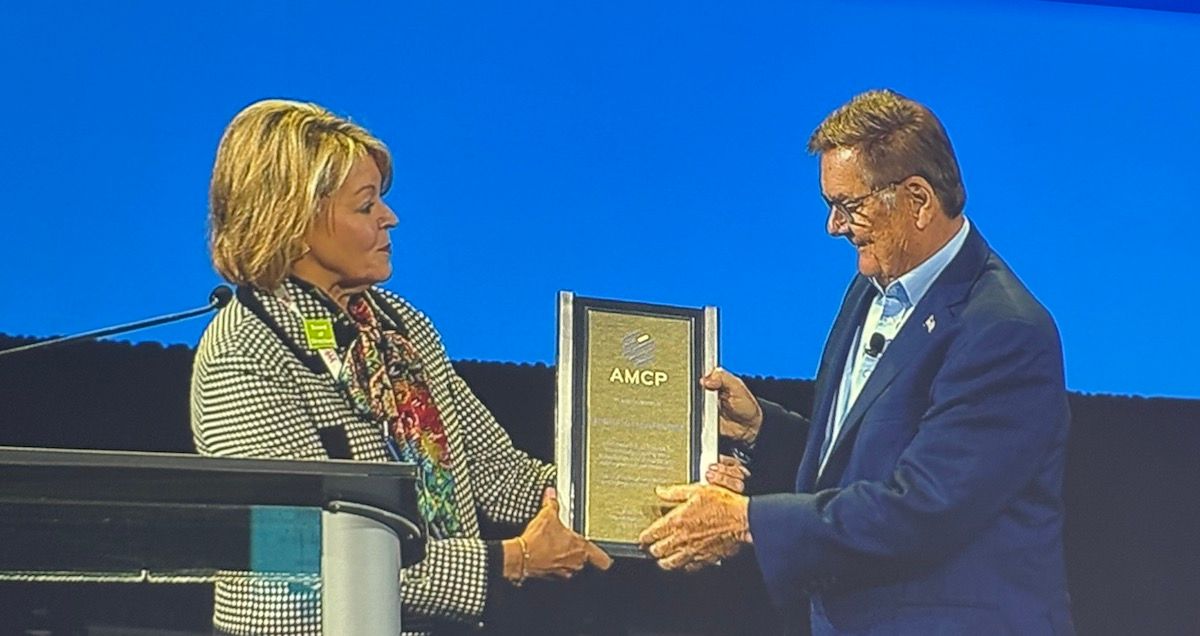- Center on Health Equity & Access
- Clinical
- Health Care Cost
- Health Care Delivery
- Insurance
- Policy
- Technology
- Value-Based Care
How Pharmacy Deserts, Biosimilars, and Market Trends Are Shaping Managed Care
Rising biosimilar adoption, shifting market dynamics, and escalating supply chain vulnerabilities are driving change in managed care, creating both challenges and opportunities for stakeholders, as explored by speakers at the Academy of Managed Care Pharmacy’s annual meeting.
Rising biosimilar adoption, shifting pharmaceutical market dynamics, and mounting supply chain vulnerabilities are reshaping managed care, presenting both challenges and opportunities for industry stakeholders.
Speakers from IQVIA tackled how the Inflation Reduction Act, drug shortages, pharmacy deserts, and the growth of biosimilars and anti-obesity medications are changing the managed care space. | Image credit: Jason - stock.adobe.com

At AMCP 2025, the annual meeting of the Academy of Managed Care Pharmacy, Doug Long, vice president of industry relations at IQVIA, and Scott Biggs, director of supplier services at IQVIA, provided a deep dive into the forces driving change, from policy-driven cost pressures to the evolving role of pharmacists. Their analysis underscored the critical need for adaptation as payers, providers, and manufacturers navigate an increasingly complex healthcare landscape.
Market Trends and Economic Influences
Long and Biggs outlined major forces shaping the pharmaceutical sector. Topics included the introduction of biosimilars—particularly for adalimumab and ustekinumab—the Inflation Reduction Act's (IRA) potential effects on innovation, and challenges related to reimbursement and pharmacy closures. They noted that the IRA’s pricing measures could impact the development of nonbiological products and reshape market incentives.
Supply chain vulnerabilities were a focal point. The speakers highlighted the US market’s reliance on imports from Europe, Switzerland, and Asia, which creates risks for drug availability. While US manufacturing capacity remains underutilized, only 2 of the top 37 sites operate at full capacity. Additionally, the IRA’s influence on insulin pricing has led to decreased market value, complicating the financial landscape for manufacturers.
Growth in Specialty Pharmaceuticals and Market Shifts
The pharmaceutical market saw substantial growth between 2022 and 2024, driven primarily by new product launches and line extensions. Specialty pharmaceuticals now account for 52% of total market value, with strong performance in immunology and oncology. The rapid expansion of glucagon-like peptide-1 (GLP-1) drugs has been particularly notable, influencing diabetes care and contributing to shifting prescription patterns.
“Obesity is now a $20 million category, and we expect [sales for GLP-1 products will] accelerate from there, as [these medications] pick up new indications for sleep apnea, heart conditions, chronic kidney disease, and more,” predicted Long.
Retail and mail-order pharmacies also experienced significant changes. The nonretail sector has accelerated, partially due to COVID-19–driven shifts in health care delivery. However, mass retailer growth has placed pressure on chain pharmacies, many of which have struggled with increasing operational demands and staffing shortages.
Generics, Biosimilars, and the Future of Competition
The session provided insights into the steady role of generics, whose market share has remained stable despite declining revenue contribution. Biosimilars were identified as a key driver of future cost savings, particularly as 116 biologics are expected to lose patent protection by 2034. While the introduction of adalimumab biosimilars has demonstrated the potential for increased competition, barriers such as pharmacy benefit manager practices and prescriber hesitancy continue to hinder broader adoption.
The speakers noted how over the past 2 years, more than 2700 retail pharmacies have closed, raising concerns and creating “pharmacy deserts.” Pharmacy deserts are low-access communities where residents face significant barriers to obtaining medications and pharmacy services due to factors like pharmacy closures, economic challenges, and geographic limitations.3
“The problem is that many of these pharmacy deserts exist in already disadvantaged communities facing significant health inequities. Many individuals in these areas have a high school education or less, lack health insurance, have limited English proficiency, experience ambulatory disabilities, and identify as racial or ethnic minorities,” Biggs explained.1
Rural areas are particularly affected, with thousands of towns lacking a pharmacy within 10 miles.2 Even in urban areas, disparities exist, with fewer pharmacies in minority neighborhoods compared with White neighborhoods, leading to reduced access to immunizations, medication adherence programs, and preventive health care. Addressing pharmacy deserts is crucial for promoting equitable health care access, reducing disparities, and improving public health outcomes.
Doug Long accepts a plaque honoring his long career in managed care pharmacy at the end of the presentation. | Image credit: Skylar Jeremias

The IRA’s potential effects on long-term care facilities and independent pharmacies were discussed, alongside the growing role of pharmacists in vaccine administration and patient education. The opioid dispensing rate has significantly decreased since 2019, and flu season vaccination efforts have continued to shift toward pharmacies, reflecting broader trends in pharmacy-based health care delivery.
Long concluded the session looking back at his long career with IQVIA, which he will retire from this year after over 40 years of work in the managed care pharmacy space.
References
1. Cantrell S, Biggs S, Long D. 2024-2025 Health care and pharmaceutical marketplace trends. Presented at: AMCP 2025; March 31-April 3, 2025; Houston, Texas. Accessed April 1, 2025.
2. Kwan N. The impact of pharmacy deserts. US Pharm. 2024;49(4):32-36. https://www.uspharmacist.com/article/the-impact-of-pharmacy-deserts
The Importance of Examining and Preventing Atrial Fibrillation
August 29th 2023At this year’s American Society for Preventive Cardiology Congress on CVD Prevention, Emelia J. Benjamin, MD, ScM, delivered the Honorary Fellow Award Lecture, “The Imperative to Focus on the Prevention of Atrial Fibrillation,” as the recipient of this year’s Honorary Fellow of the American Society for Preventive Cardiology award.
Listen
Promoting Equity in Public Health: Policy, Investment, and Community Engagement Solutions
June 28th 2022On this episode of Managed Care Cast, we speak with Georges C. Benjamin, MD, executive director of the American Public Health Association, on the core takeaways of his keynote session at AHIP 2022 on public health policy and other solutions to promote equitable health and well-being.
Listen
